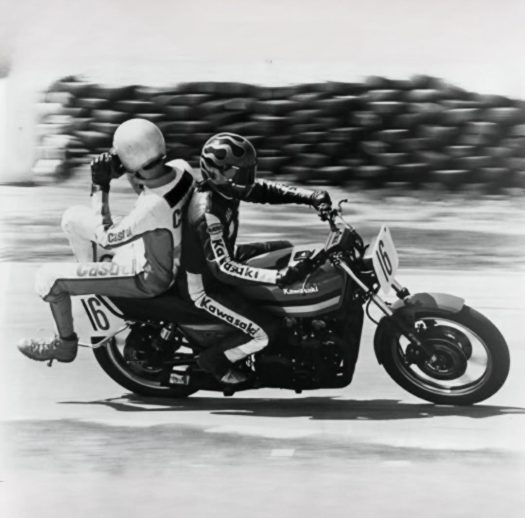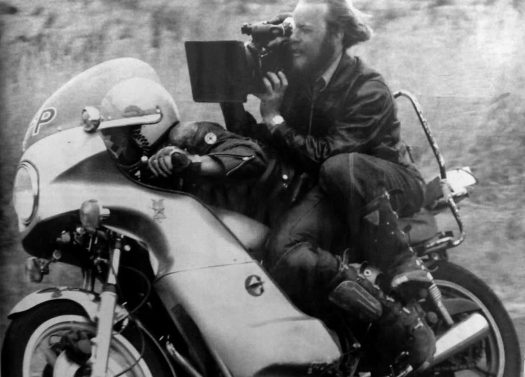Technology moves at a fairly rapid pace and after nearly two decades publishing Cafe Racer magazine, it’s become apparent just how quickly the magazine game changes. Back when we first put together issue #1, capturing video footage or on-board images of a moving motorbike involved lashing a three-pound video camera to a machine or shooting said bike from the roadside or another moving vehicle.
I remember attending the press launch for Triumph’s 2001 Bonneville and being instructed to ride as close as possible to the rear bumper of a camera car. Making the session that much more stressful was the photographer’s rather compromising position: he’d been lashed into the car’s hatchback with a Bunji cord and dangled himself just inches from both the onrushing pavement and the hurtling front wheels of several speeding test bikes in order to properly capture the desired images.

In years past, filmmakers and still photographers faced even more awkward tasks as camera equipment seldom fit easily aboard two-wheelers of any kind. Check out this crazy image from the test launch of an early 1980s Kawasaki GPZ where the still shooter had to don a set of racing leathers and ride as a rearward-facing pillion in order to shoot a pack of riders following along on the track.
Balancing a massive film camera on one’s shoulders seldom made for steady, clear imagery and talking to old timers like the late British motorsports director Peter Starr, tales of expensive camera equipment biting the dust due to bodged-together mounting systems were far from uncommon. This behind-the-scenes shot from the 1980 production of ?Mad Max” reveals just how chancy a job camera operators had.

This all seems so quaint today when tiny, lipstick-sized Go Pro cameras can be mounted on just about any surface of a moving motorcycle (or rider) to create the sort of high-res, vibration-free footage previous generations of biking enthusiasts could only dream of. Makes you wonder how photos in magazines some 30 years on will be shot, doesn’t it?







